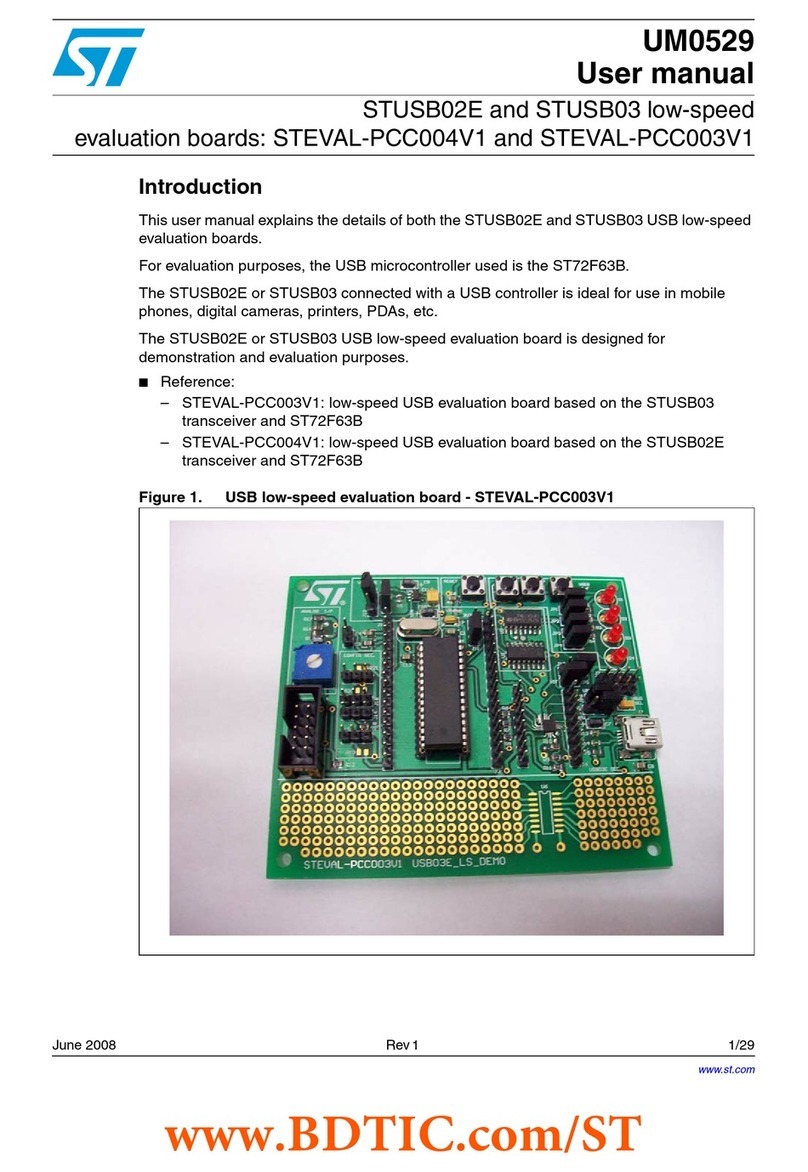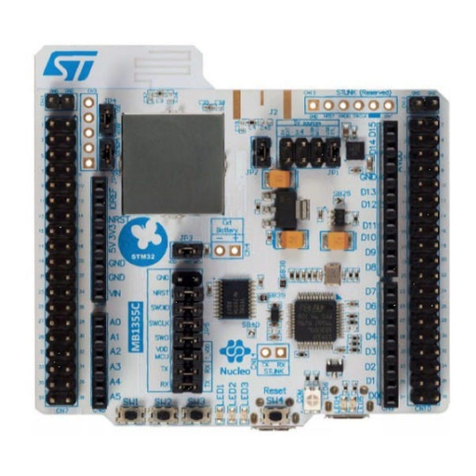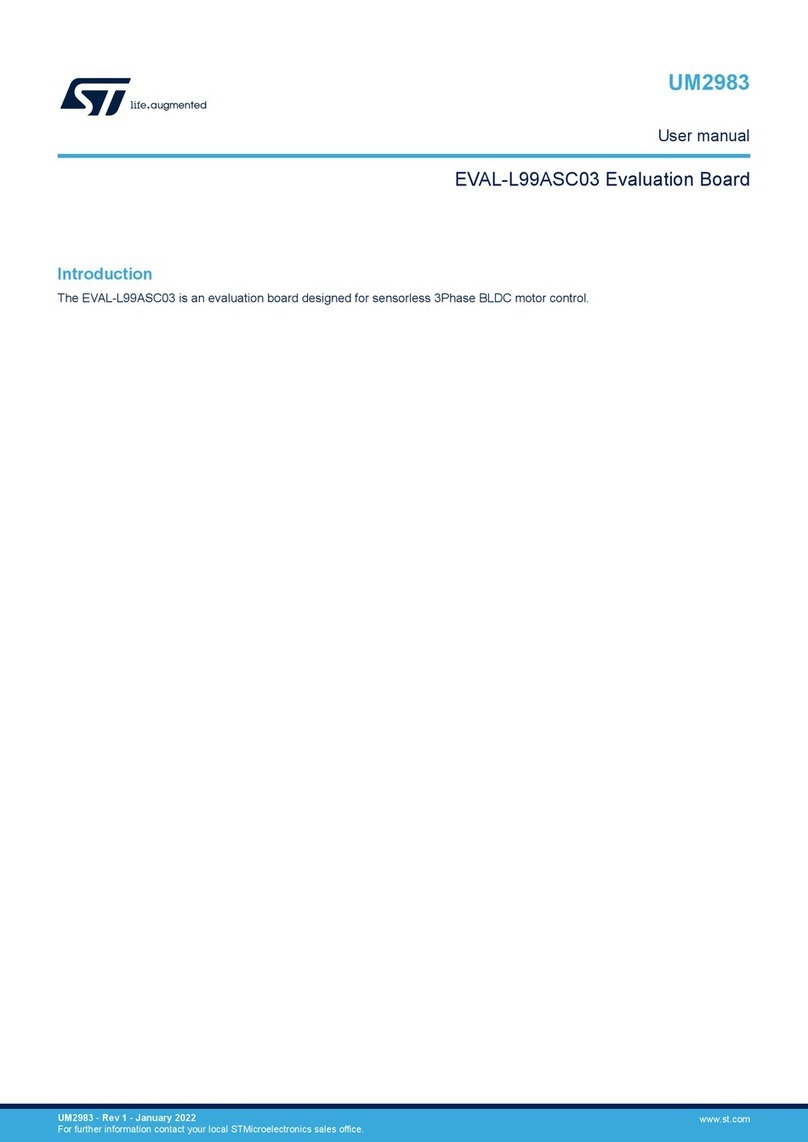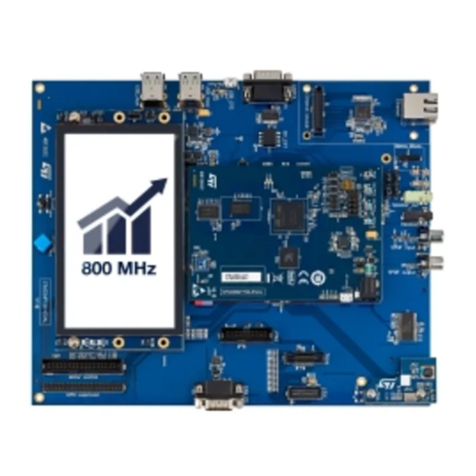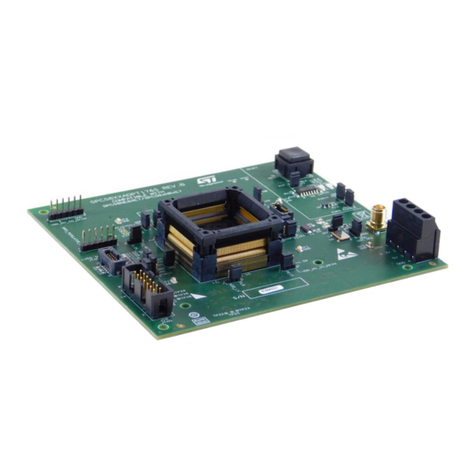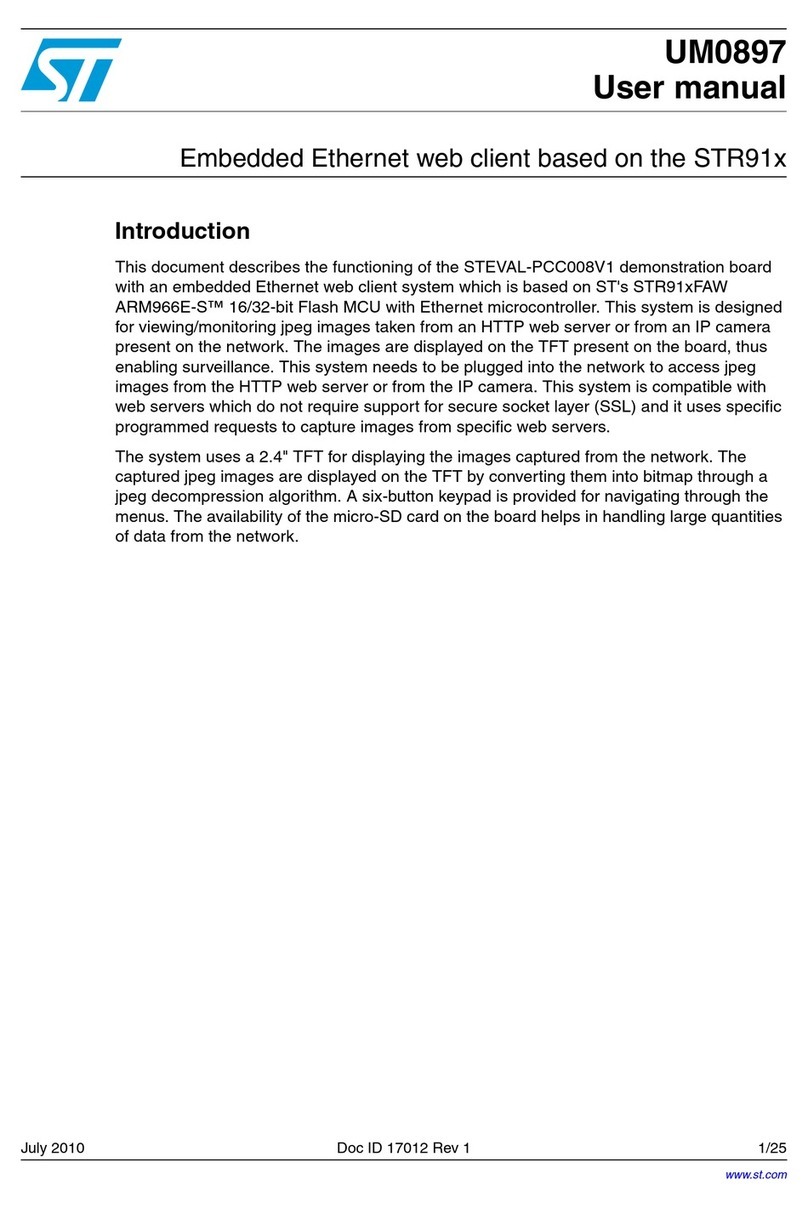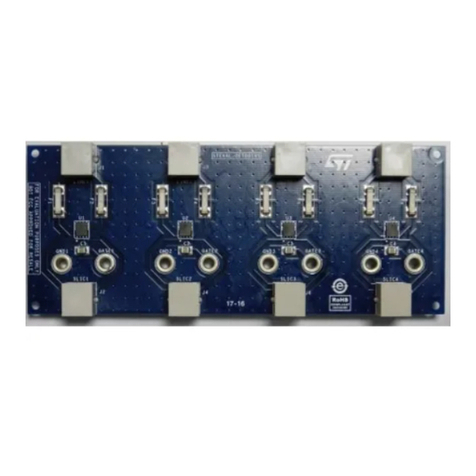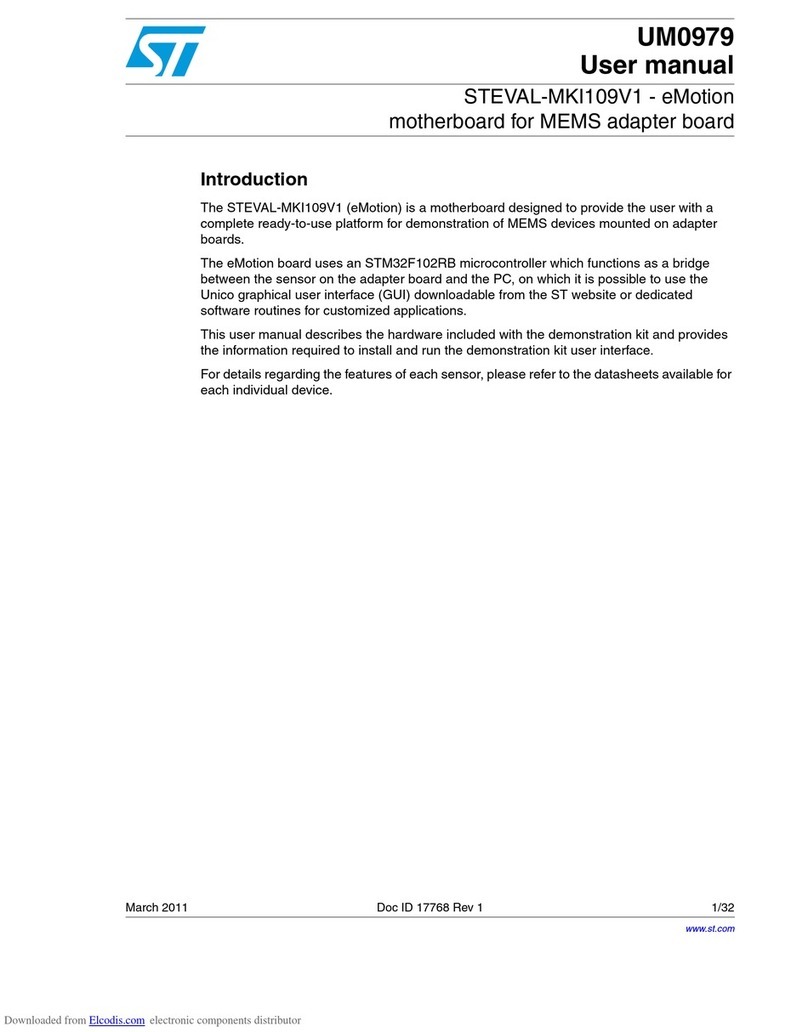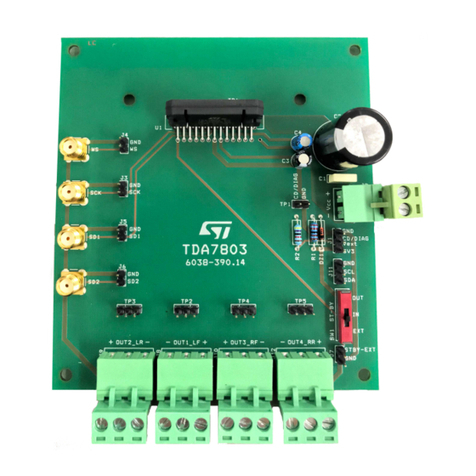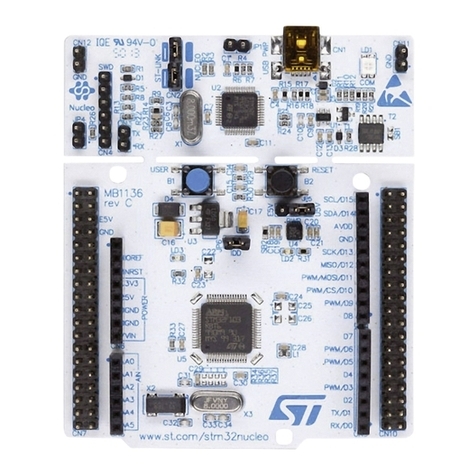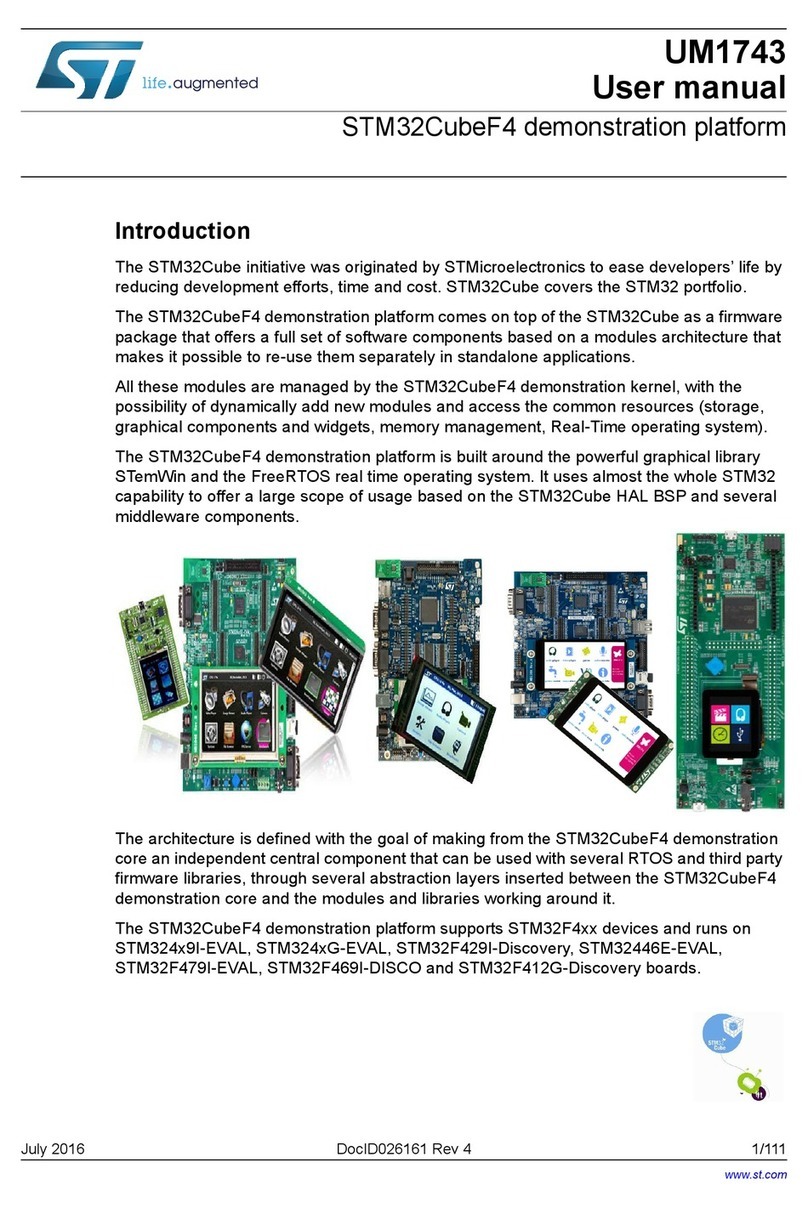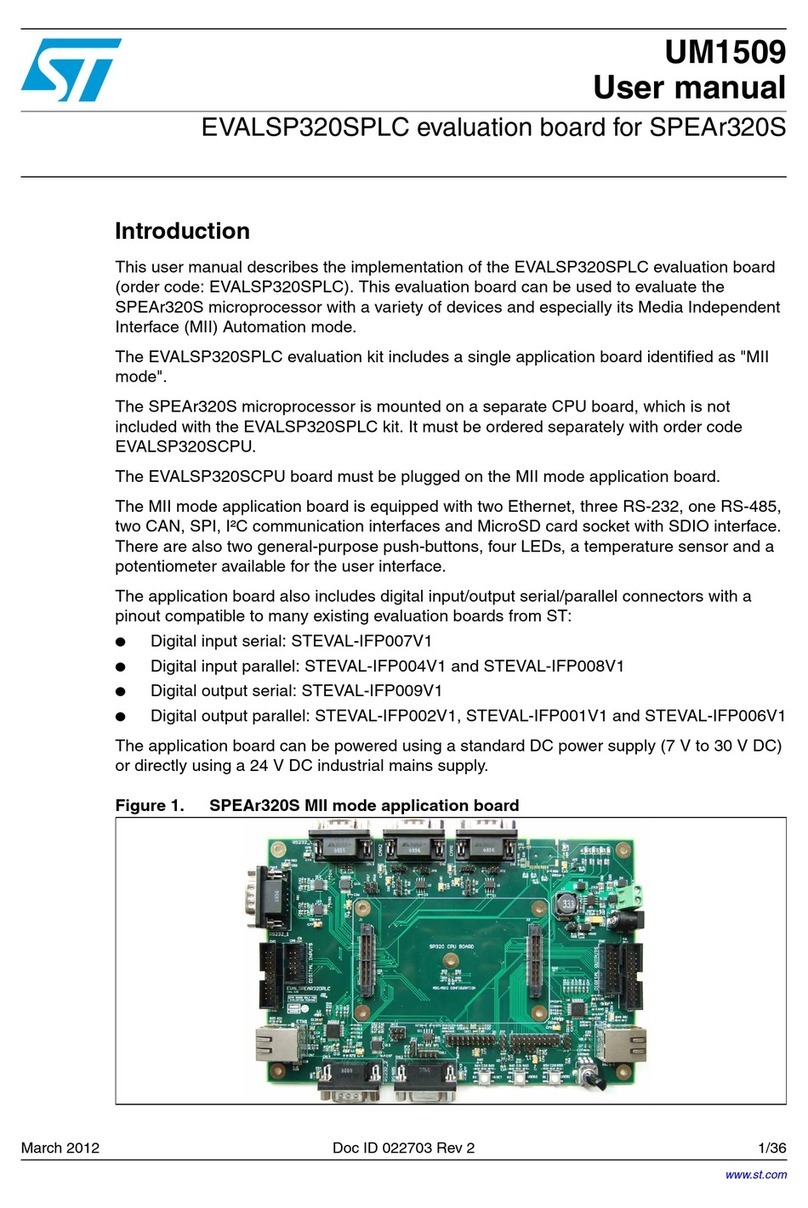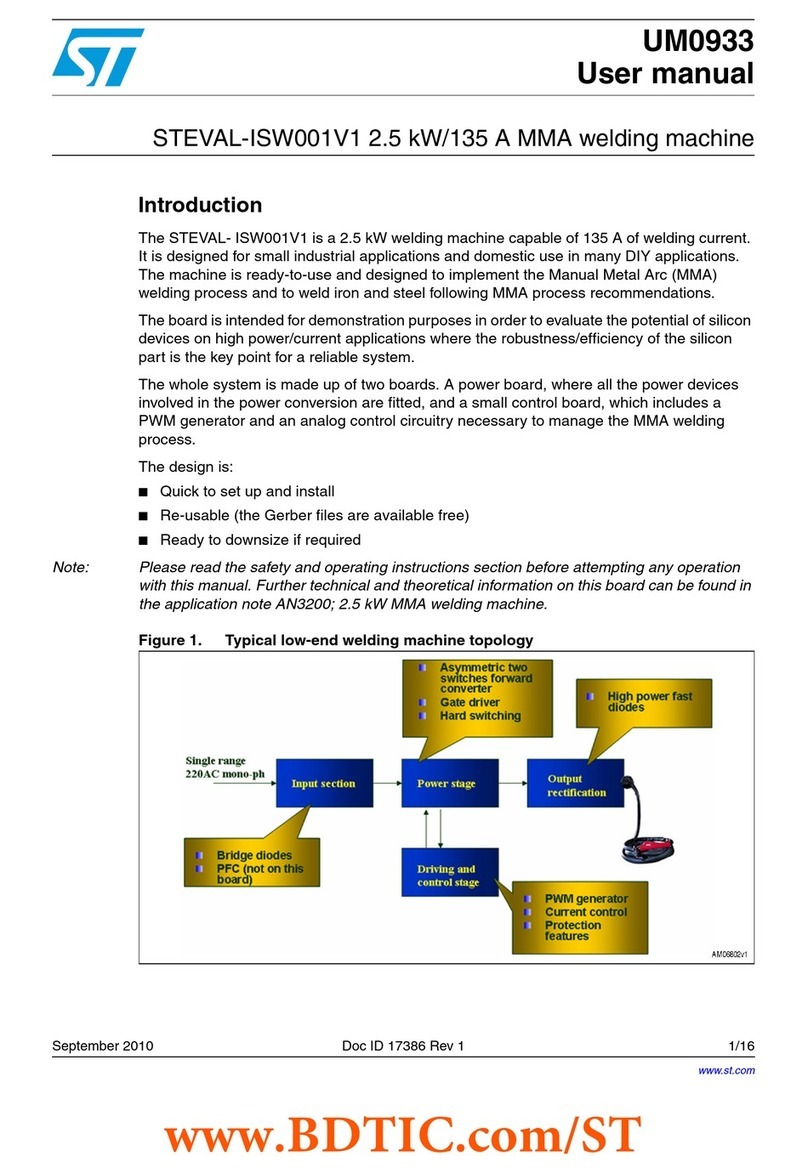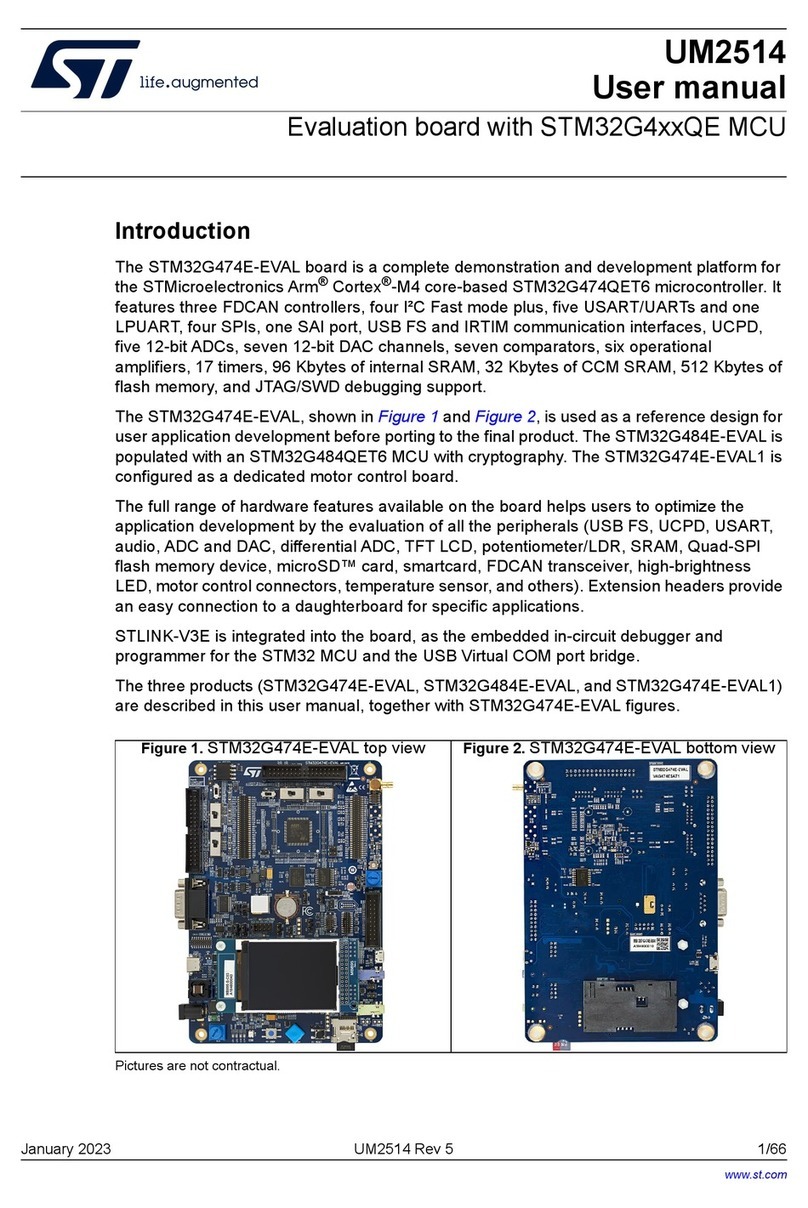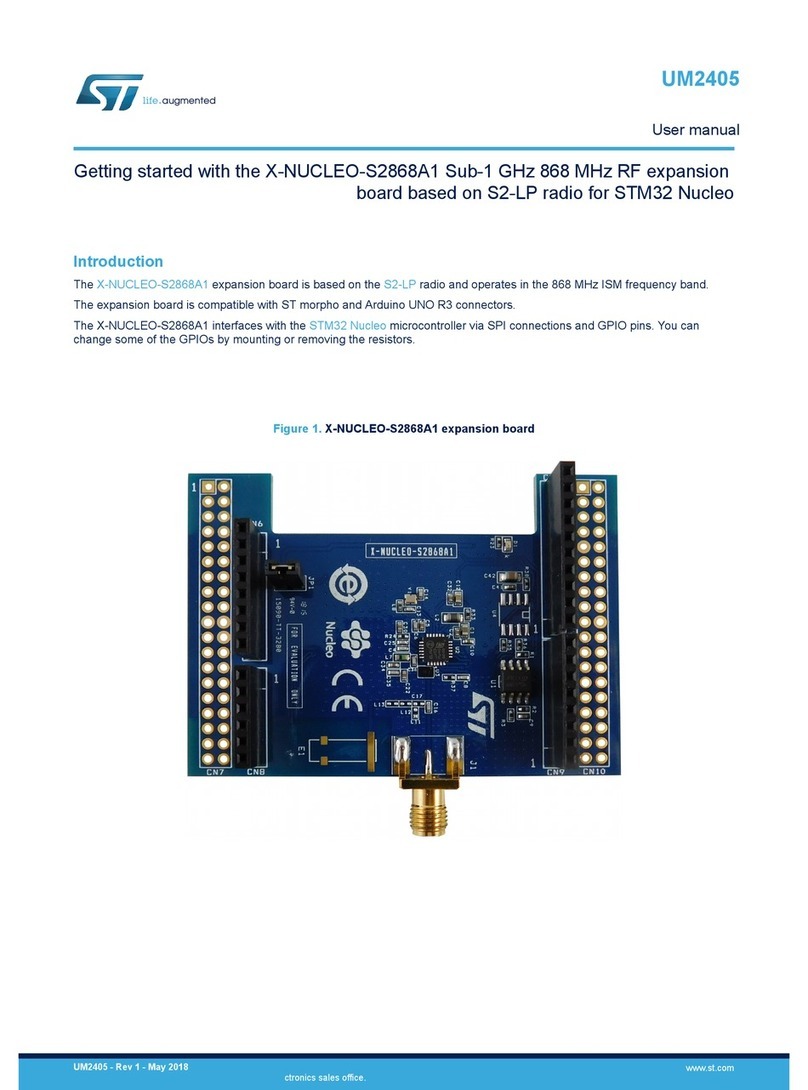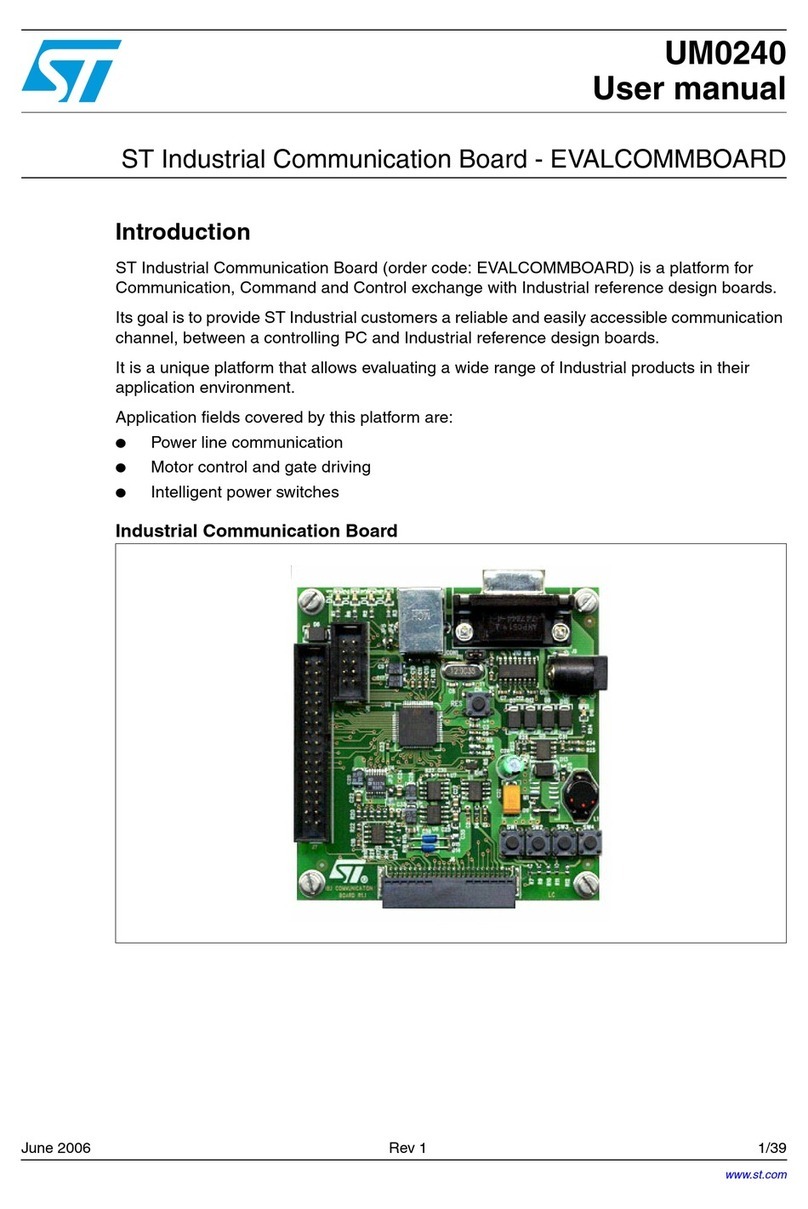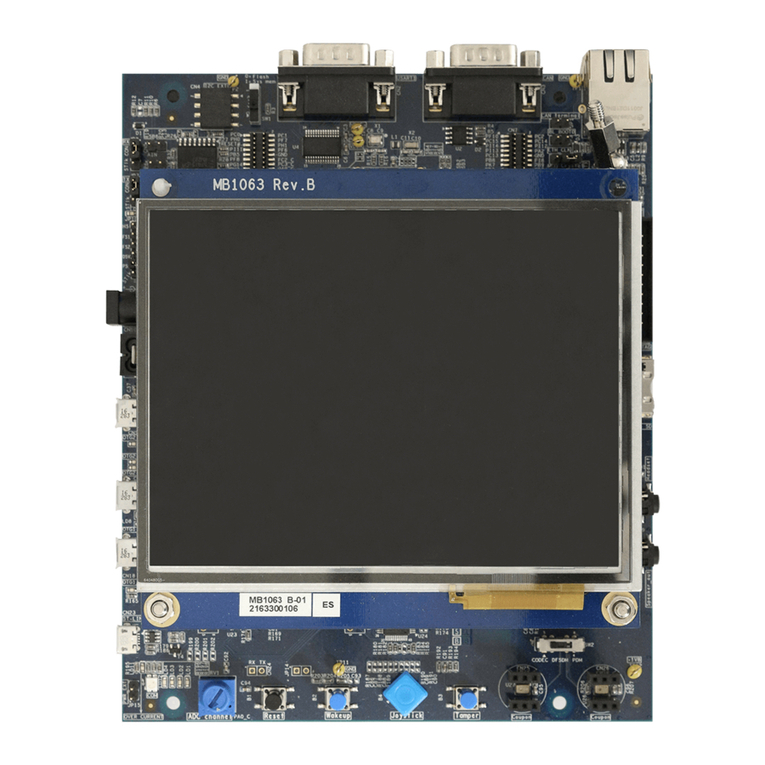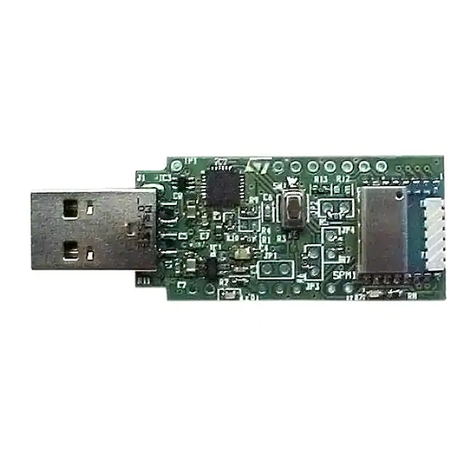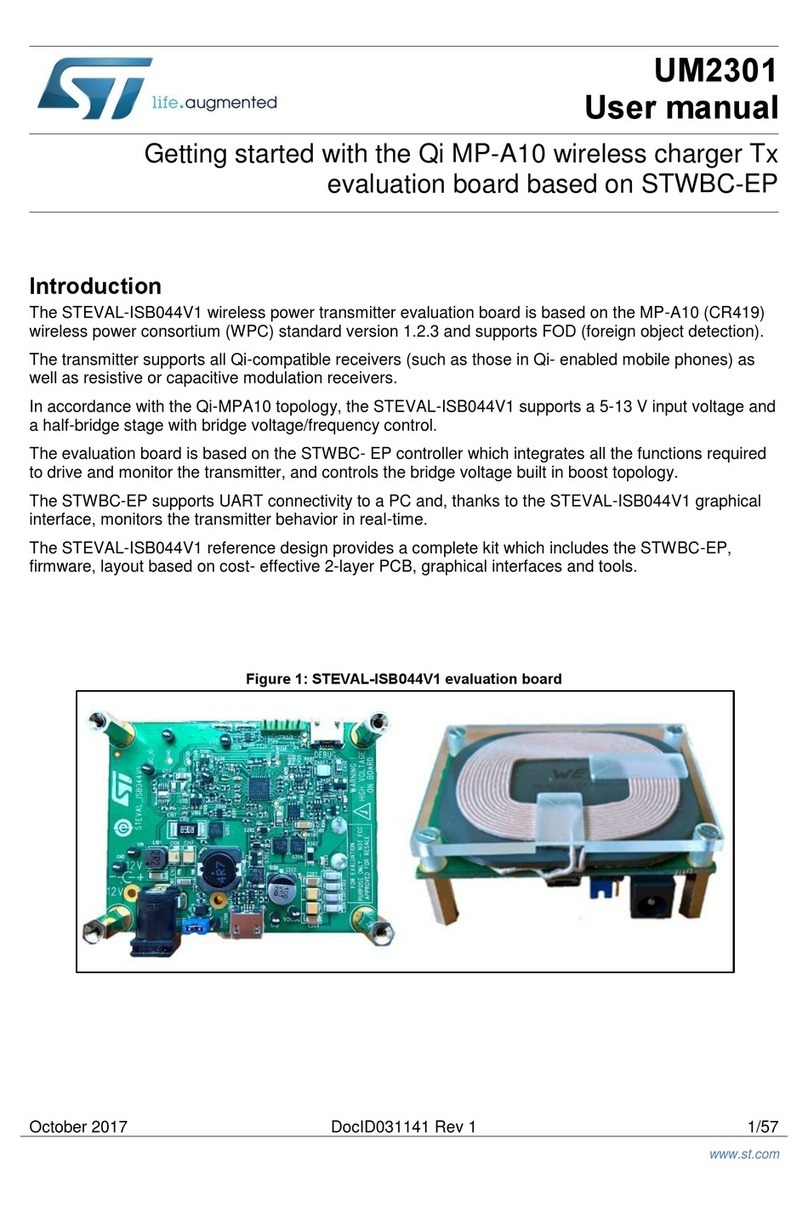
3Connectors and test points
3.1 VIN – TPxx
This connector is used for the input supply voltage. This voltage is provided, through the input EMI filter, to the
device VIN pin.
A power supply ranging from 4 V to 38 V should be connected to this test point, setting a proper current limit.
The wire connection should be as short as possible to avoid or limit possible oscillations due to the parasitic
inductance of the wire and the input capacitor.
3.2 GND1 and GNDprim – TPxx and TPxxx
GND1 and GNDprim are, respectively, the return path of the input and output capacitors. Wires used for this
connection should be as short as possible.
3.3 VOUT1 – TPxx
This is the connector for the primary non-isolated output voltage. To load the primary output, connect a resistor or
an active load to this test point. Short wires are recommended.
3.4 EN/SYNCH – TPxx
By default, the EN pin is pulled-up to the input voltage through the resistor Ren1. This makes the device always
enabled. The same test-point can be used to apply an external signal for synchronization.
3.5 PGOOD – TPxx
This test point is directly connected to the PGOOD pin.
3.6 VOUTiso – TPxx
This test point provides the isolated output voltage (unregulated). When completely unloaded, the voltage at this
pin could be much higher than the theoretical value (N*VOUT1). Short wire connection from this test point to the
load is recommended.
3.7 GNDiso – TPxx
The voltage at this test point represents the reference for the isolated voltage. Short connection is recommended.
3.8 VISO+, VISO- and VISO_gnd – TPxx
The isolated output voltage can be post-regulated and used to generate a dual voltage. On the bottom side of
the PCB, the layout for post-regulation is available (components to be assembled). If the components of the post
regulation circuitry are assembled, the VISO+, VISO- and VISO_gnd test points provide a positive (VISO+) and
negative voltage (VISO-), both referred to VISO_gnd.
UM3110
Connectors and test points
UM3110 - Rev 1 page 4/29
